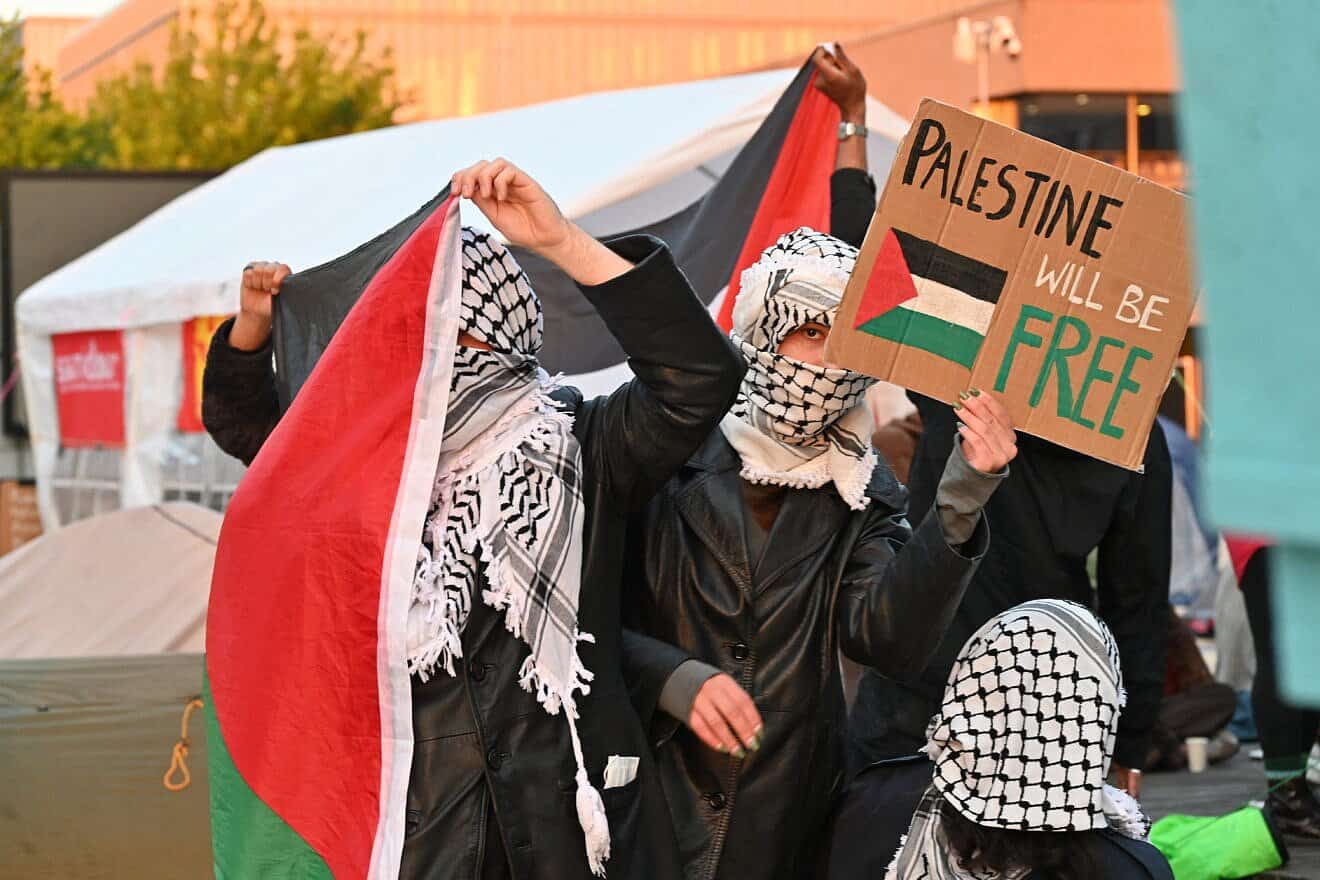
No Swastikas, No Hoods, No Keffiyehs
(Jewish News Syndicate) – A few years ago, a parent of Indian background complained to public-school administrators in Fairfax County, Va., that the swastika—an ancient symbol of good fortune in Hindu and Buddhist culture—had been wrongly tarnished through appropriation by Nazi Germany. Its classroom portrayal in that light was unfair, he insisted.
Poor man.
Adolf Hitler’s National Socialist German Workers (Nazi) Party had not only appropriated a cherished sign of his heritage but transformed the swastika into a marker of national-racial superiority and murderous intolerance. Something nearly identical also relates to the keffiyeh, originally a Bedouin Arab headdress.
Of the swastika, the United States Holocaust Memorial Museum explains that the Nazis meant it to invoke a pure “Aryan racial” identity. The swastika became “a potent symbol intended to elicit pride among Aryans” and also “struck terror into Jews and others deemed enemies of Nazi Germany. … Its present-day use by certain extremist groups promotes hate.”
So, too, with the keffiyeh—the accessory donned by anti-Israel, anti-Jewish, pro-Hamas and, for that matter, anti-capitalist, anti-democratic and anti-American demonstrators from London to Los Angeles.
Yasser Arafat, head of the terrorist Palestine Liberation Organization, began the popularization of the keffiyeh in the West by wearing one during his 1974 speech at the United Nations. The checkered scarf slowly joined T-shirt images of Ernesto (“Che”) Guevara, executioner for Cuban dictator Fidel Castro’s regime, as a signifier of revolutionary chic.
However, anti-Zionist, anti-Jewish use of the keffiyeh did not begin with Arafat. In the 1930s, Brigadier John Bagot Glubb adopted the red-and-white keffiyeh as part of the uniform of the Desert Patrol in British-created Transjordan. This Bedouin-based force became the nucleus of the Arab Legion (later the Jordanian Army), which Glubb commanded against Israel during its War of Independence.
After World War II and the Holocaust, German authorities banned the display of the swastika, except for some artistic or educational uses. But in the Middle East, use of the keffiyeh spread among anti-Israel and antisemitic individuals and movements. Images of keffiyeh–wearing Dalal Mughrabi, for example, the female leader of the 1978 Coastal Road Massacre of more than 30 Israeli bus passengers—men, women and children—continued the garment’s marketing.
One innovation by Arafat and his colleagues was to favor a black-and-white checked headdress rather than Glubb’s red-and-white version. Doing so was meant to assert a Palestinian Arab identity separate from a Jordanian one, despite Jordan comprising the larger part of the territory originally intended for the League of Nations’ Palestine Mandate, and including a Palestinian Arab majority.
Although Nazi mass murder, particularly of Jews in the Holocaust, foreclosed use of the swastika by otherwise respectable Westerners, the keffiyeh provides a stylish workaround. So, immediately after the Oct. 7 massacre of more than 1,200 people by Hamas (the Islamic Resistance Movement) and Palestinian Islamic Jihad, both U.S.-designated foreign terrorist organizations, rallies justifying the slaughter as “resistance by any means necessary” featured countless keffiyeh-wearers claiming to “support Palestine.”
Just as European Jews and members of other religious, national and ethnic minorities recognized the swastika as a symbol of terror and murder, many Israelis, Jews and their supporters have incorporated the keffiyeh as a device conveying the same annihilationist subtext. When Elias Rodriguez pulled a keffiyeh from his backpack after allegedly shooting two young Israeli embassy staffers at point-blank range on a Washington, D.C., sidewalk in May—killing them both—and shouting “I did it for Palestine,” the subtext became text.
French philosopher Pascal Bruckner observed that on last year’s International Day of Women’s Rights, “French feminists, who wanted to demonstrate alongside other activists to call attention to the rapes and killings perpetrated by Hamas on Oct. 7, were denounced as fascists by keffiyeh-wearing agitators.”
Why the inversion? According to Bruckner, “What has happened on university campuses, in both the Old and New Worlds, since Hamas’s slaughter of Israelis … and Israel’s subsequent military response in Gaza, proves that antisemitism—the correlate of anti-Zionism—has found new fuel to express itself and to develop.”
The United States has a well-known precursor of the keffiyeh, the Ku Klux Klan’s hooded robe, meant to disguise post-Civil War enforcers of white supremacy. Many states, including Virginia, eventually adopted anti-masking laws. Today, the keffiyeh is often worn around the face as a similar disguise and ought to be treated as similarly illegal.
How should teachers and administrators in public-school systems and universities deal with the keffiyeh in classrooms and other institutional settings? The same way they would with swastikas and Klan hoods.
If that’s asking for too much clarity, then in conformity with Title VI of the 1964 Civil Rights Act, as amended, requiring maintenance of safe, nondiscriminatory learning environments, the rule should be: No swastikas, no hoods, no keffiyehs.






